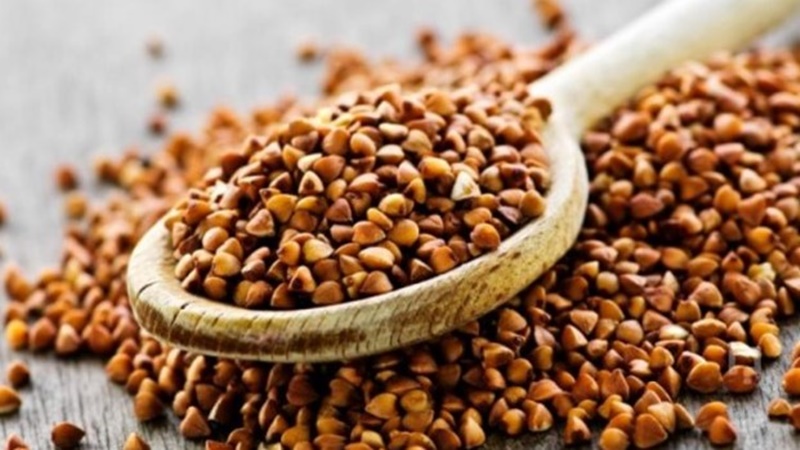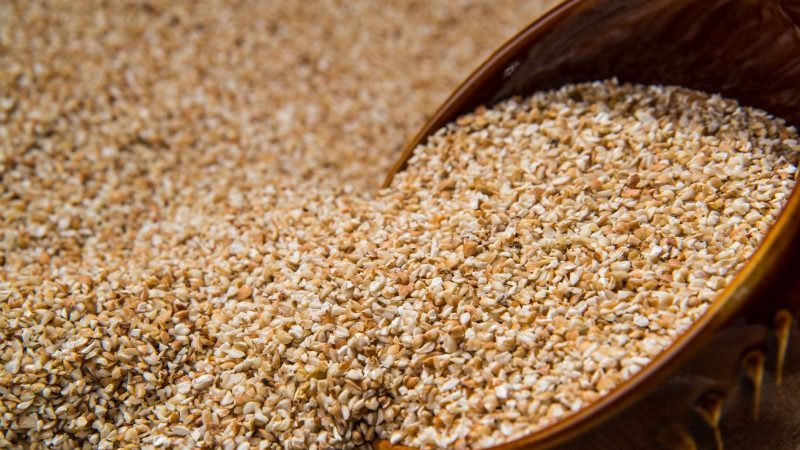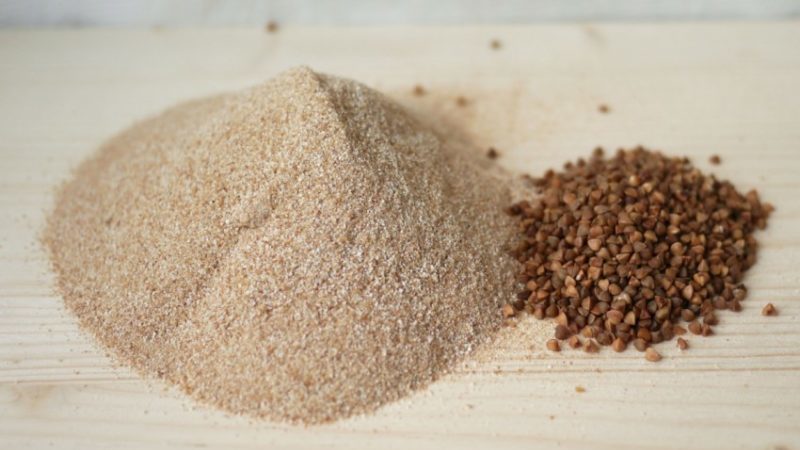What is the Difference Between Buckwheat and Buckwheat
At first glance, the same root words - buckwheat and buckwheat - have different meanings. The confusion stemmed from their misuse among the common people. Usually buckwheat is called buckwheat, which is sold in a store. Let's see if buckwheat and buckwheat are the same thing or not.
The content of the article
Buckwheat and buckwheat - what is the difference
The people in Russia in different villages called the same cereal differently: buckwheat, buckwheat, buckwheat. Ozhegov's Dictionary of the Russian Language indicates that "buckwheat" is a derivative of the colloquial "buckwheat", and means the same as "buckwheat". To understand the difference between buckwheat and buckwheat, you need to know their exact definition and differences.
Buckwheat is a melliferous herb from the Buckwheat family.... It happens ordinary and Tatar. Unlike ordinary buckwheat, the grain of Tatar buckwheat grows smaller and thicker-skinned.
Common buckwheat belongs to cereal grain crops. The seeds of the plant are used for food, songbirds love them, they go to feed animals, for example, horses, pigs.

Buckwheat, or buckwheat (folk.) - These are the seeds of the buckwheat plant, which remain after the maturation of the bush and are popular as a food product. They are used in cooking for the preparation of cereals and flour.
On a note! Buckwheat is a plant, and buckwheat is the grains that ripen on it.
What else is made from buckwheat
Annual common buckwheat, after planting on the site, grows in height from 60 cm to 1.3 cm. Green leaves are used as a medicine to stimulate blood circulation, young shoots are added to vegetable salads. Buckwheat grains are eaten in the form of porridge, they serve as food for birds and animals. Buckwheat flour and butter are also made from them.
Raw grains have a dark brown shell. They are passed through a metal sieve and the kernel is separated from the husk (husk). It is soft to the touch, smells good, does not cause allergies, breathes well, has orthopedic properties, does not get confused like synthetic winterizer or cotton wool. That is why buckwheat husks are used as a natural filler for pillows, mattresses, blankets, and toys.
From buckwheat grains

Depending on the condition and processing of grain, buckwheat is divided into several types:
- Steamed. After harvesting, the husks are removed from them and subjected to heat treatment under pressure. This is a traditional roasting method, as a result of which buckwheat turns brown in color and emits a characteristic buckwheat flavor. People call it "fried".
- Unsteamed - grains that have not undergone heat treatment. This is a raw cereal without roasting, which has a green color. It contains the largest amount of plant proteins (per 100 g of cereals - 12.6 g). This cereal is popular with raw foodists and vegetarians.
- Peeled and not peeled. After ripening and harvesting the grain, unhulled buckwheat is obtained. This is a natural raw material for the further production of green buckwheat. Unshelled grains are dark brown in color and can be stored for 3-5 years without harming the inner core. It is also used for seeding on the site.
After heat treatment under high pressure, buckwheat grains are divided into several varieties and used for other purposes.
Core
Passing the grains through a metal sieve, the husks are separated from the kernels. Minimal mechanical processing allows them to retain their natural triangular shape.
On a note! Kernel any grain that has been peeled off and not crushed can be named, such as wheat.
Done

Done, or chipping - these are kernels that have undergone a crushing process, that is, the grains are crushed, lost integrity, but partially retained the upper brown shell. There are coarse or fine crushing. Buckwheat porridge is prepared from the chaff, which is excellent for feeding children, since it is easier to digest and digest.
The price was cheaper than the unground, because the grains lost their integrity and presentability. At the same time, in terms of nutritional quality, they are not inferior to whole grains.
The table will help to see the difference between these two types:
| Characteristic | Core | Done |
|---|---|---|
| Structure | Whole grains | Crushed or crushed grains |
| Time for preparing | Take longer | Prepare faster |
| For which dishes | For crumbly cereals | For viscous cereals, add to the composition of cue ball, cutlets |
| Price | Expensive | Cheaper |
Smolensk groats
Smolensk buckwheat is obtained as a result of grinding the grains into a prodol, and then into smaller cereals... This is not flour yet, but its consistency resembles semolina. In Smolensk groats, only a light brown center remains from the grains, the top layer is completely removed and flour dust is removed. The triangular shape of the original grain is not preserved.
Smolensk groats are used for the preparation of liquid or viscous cereals, meatballs, casseroles. Perfectly absorbed by the body.
Read also:
Life hacks for Cinderellas: how to separate rice from buckwheat quickly
Buckwheat flour

Buckwheat flour Is another type of product that is obtained from buckwheat grains by thorough grinding. In structure, it is very similar to wheat flour, but differs in color - it has a light brown, almost beige tint. It is not very popular with housewives, unlike wheat, since it is more difficult to knead.
Homemade buckwheat flour is healthier than wheat flour. In the process of home cleaning of grains from husks and subsequent grinding, it is impossible to completely separate the husks from the grains, as in production. But this is for the best, since most of the nutrients are stored in the upper shell.
On a note! Wheat flour can be replaced with buckwheat. It is used in the preparation of dietary and children's dishes, added to baked goods.
Medicines
Buckwheat, rich in its medicinal properties, is used both in folk and traditional medicine for the production of infusions and medicines. A large amount of folic acid (32 μg per 100 g) in the composition stimulates hematopoiesis, strengthens the immune system, increases the body's resistance to harmful environmental factors.
Buckwheat flowers are harvested during the ripening period together with young leaves, when rutin (vitamin P) in them reaches the highest concentration. On its basis, in pharmacology, drugs are made that stimulate blood circulation, restore heart functions, prevent tissue death during frostbite, as well as means that protect against radioactive and X-ray radiation.
Attention! "Zukronorm-biol" is a phytopreparation that contains green buckwheat. It is used for diabetes mellitus, vascular disorders.
Medicines containing herbal rutin:
- "Urutin";

- "Rutamine";
- "Rutin";
- "Askorutin" and others.
Conclusion
Distinguishing between the concepts of "buckwheat" and "buckwheat" is not difficult at all. Buckwheat is the name of a herbaceous plant, and buckwheat is its seeds. Kernels, prodel, cereals and flour are made from grains, and buckwheat is used to treat diseases.